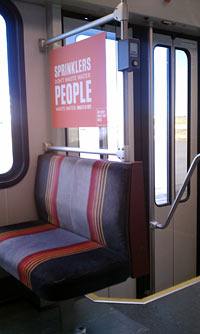 I’m a big fan of the light rail (RTD) here in Denver. Most regulars follow these rules instinctively:
I’m a big fan of the light rail (RTD) here in Denver. Most regulars follow these rules instinctively:
- Don’t put your bag on the seat next to you. Lap or floor are the only polite choices.
- Don’t sit with your legs crossed. (See also #3)
- Don’t slouch so far you leave no room for the person across from you.
- Don’t sit on the outside of the seat when no one else is there. Not only will people step over you to sit on the other side of the seat, but then you’ll be stuck with the less desirable outside seat.
If you do #4 and #1 at the same time, congrats – you’ve won the douchebag award!
All of these rules can be ignored if the train is deserted. Putting your feet up on the seat across from you when someone is sitting there is NEVER OK. It doesn’t matter if they are not sitting directly across from you, this is still an invasion of person space. This only happened once, thankfully, and I was able to restrain my rail rage.
Also, I should say that I am far from blameless – I will sometimes set my bag down on the seat when the train is pretty empty and not move it soon enough, or let my big winter coat take up some of the seat to my right.
Other observations: people sitting almost never offer their seat to women, (older-looking people do a bit better) and the seats at the end of the light rail cars are not as wide as the standard seats (to allow room for bicycles) so they are not exactly two person seats. This sometimes leads to awkward interactions.
Bonus points for helping tourists out.



